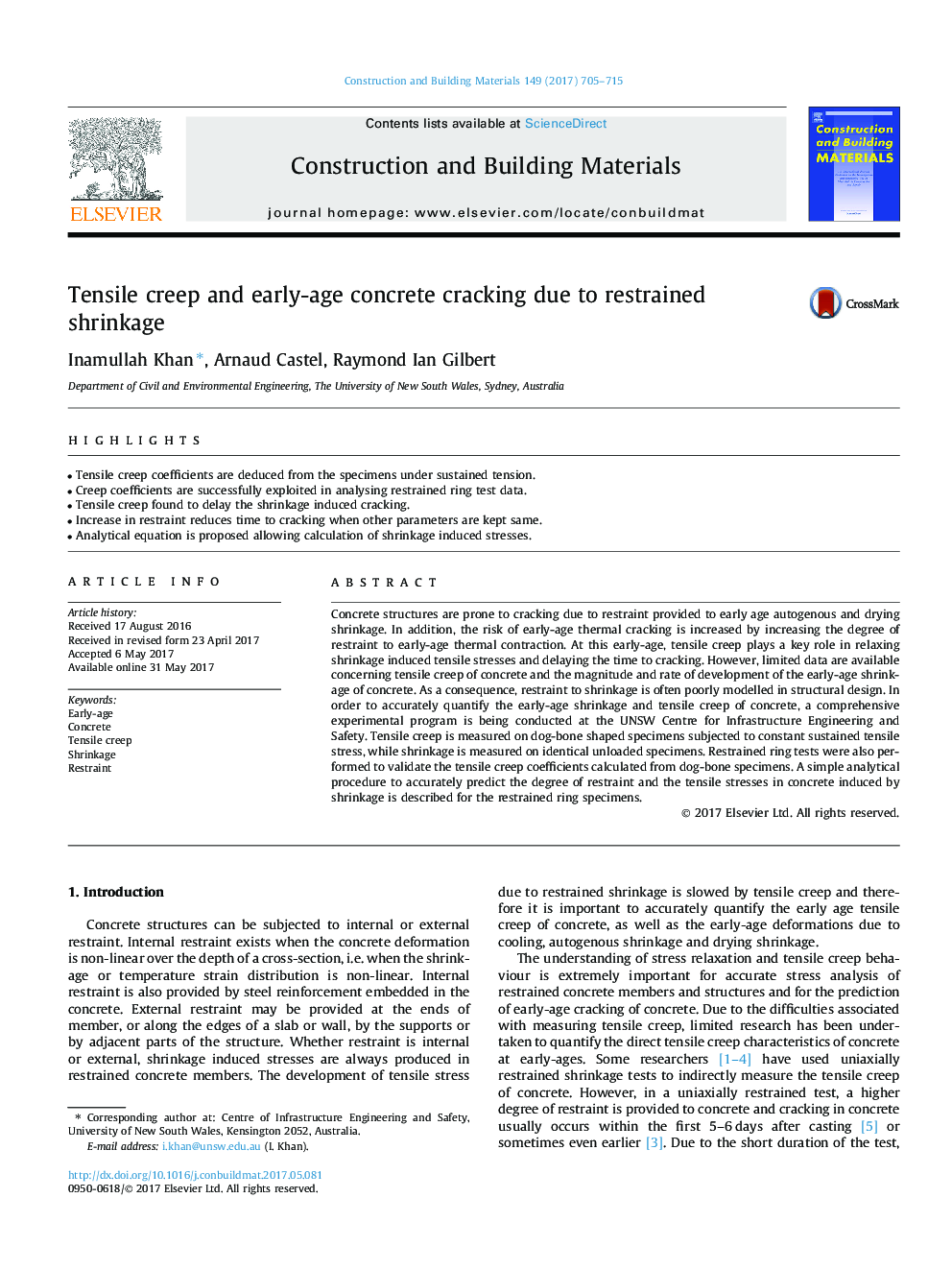| Article ID | Journal | Published Year | Pages | File Type |
|---|---|---|---|---|
| 4913112 | Construction and Building Materials | 2017 | 11 Pages |
â¢Tensile creep coefficients are deduced from the specimens under sustained tension.â¢Creep coefficients are successfully exploited in analysing restrained ring test data.â¢Tensile creep found to delay the shrinkage induced cracking.â¢Increase in restraint reduces time to cracking when other parameters are kept same.â¢Analytical equation is proposed allowing calculation of shrinkage induced stresses.
Concrete structures are prone to cracking due to restraint provided to early age autogenous and drying shrinkage. In addition, the risk of early-age thermal cracking is increased by increasing the degree of restraint to early-age thermal contraction. At this early-age, tensile creep plays a key role in relaxing shrinkage induced tensile stresses and delaying the time to cracking. However, limited data are available concerning tensile creep of concrete and the magnitude and rate of development of the early-age shrinkage of concrete. As a consequence, restraint to shrinkage is often poorly modelled in structural design. In order to accurately quantify the early-age shrinkage and tensile creep of concrete, a comprehensive experimental program is being conducted at the UNSW Centre for Infrastructure Engineering and Safety. Tensile creep is measured on dog-bone shaped specimens subjected to constant sustained tensile stress, while shrinkage is measured on identical unloaded specimens. Restrained ring tests were also performed to validate the tensile creep coefficients calculated from dog-bone specimens. A simple analytical procedure to accurately predict the degree of restraint and the tensile stresses in concrete induced by shrinkage is described for the restrained ring specimens.
